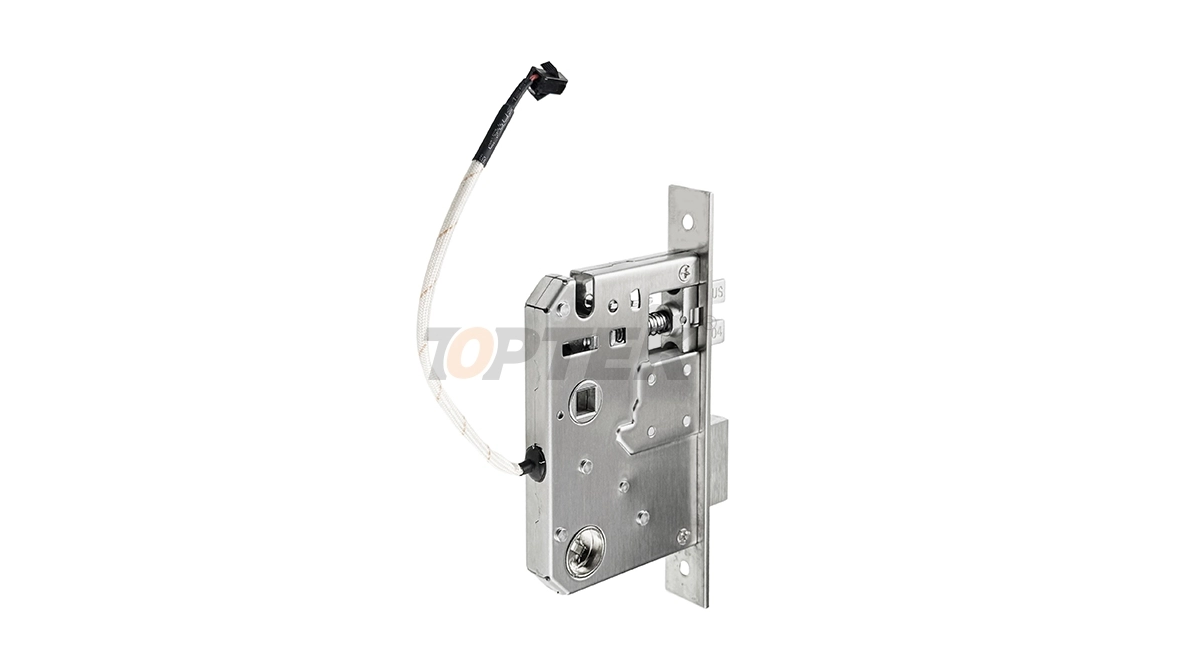Protecting building occupants is a key priority for architects, developers, and property managers alike. While numerous safety measures contribute to creating secure structures, fire protection is perhaps one of the most critical considerations. Enter EN 1634 fire-rated locks — a pivotal component in upholding building safety and meeting stringent fire-resistance standards.
But how exactly do these specialized locks work, and why should they matter to you? This guide dives deep into the purpose, importance, and applications of EN 1634 fire-rated locks to enhance your understanding of their crucial role in building safety.
What Are EN 1634 Fire-Rated Locks?
Fire-rated locks are specially engineered devices designed to withstand extreme heat and remain operational for extended periods during a fire. EN 1634 is the European standard for assessing fire doors and hardware, including locks, ensuring their fire-resistance capabilities are tested rigorously.
For locks to achieve this certification, they undergo extreme testing conditions, verifying their performance when exposed to fire for a specified amount of time. These locks are primarily paired with fire-rated doors to create a barrier that contains fire and smoke, providing more time for safe evacuation.
Why Are Fire-Rated Locks Crucial for Building Safety?
The effectiveness of a building's fire safety system heavily depends on the quality of each component used. Fire-rated locks, certified under EN 1634, offer several critical benefits:
1. Containing Fire and Smoke
Fire-rated locks play a vital role in compartmentalizing a fire, limiting its spread to other areas of a building. By maintaining the integrity of fire-rated doors, these locks help contain both flames and toxic smoke, buying precious time for occupants to evacuate safely while protecting valuable infrastructure.
2. Enhancing Door Integrity
Locks certified with EN 1634 ensure that fire doors maintain their structural integrity at high temperatures. A compromised lock mechanism during a fire could render a door useless; these locks are specifically designed to reduce the likelihood of failure when it matters most.
3. Compliance with Legal Standards
Many building codes mandate fire-resistant hardware in both residential and commercial constructions. Using EN 1634 fire-rated locks ensures compliance with local regulations, minimizing liability and safeguarding building certifications.
4. Aiding Accessibility and Emergency Egress
Modern fire-rated locks offer functionality without compromising accessibility. Features like electronic locking mechanisms, panic bars, and self-latching capabilities make it easier for building occupants to evacuate quickly during emergencies.

Key Applications of EN 1634 Fire-Rated Locks
Fire-rated locks find applications across various environments where fire safety is of paramount concern. Here’s where and how they are typically used:
1. Commercial Spaces
High-traffic buildings like offices, shopping malls, and hotels benefit significantly from EN 1634 fire-rated locks, as these environments demand extra safety precautions given the high number of occupants.
2. Residential Buildings
For multi-family residential buildings or high-rises, fire-rated locks provide a vital layer of safety, especially in ensuring fire escape routes remain secure and functional.
3. Industrial Facilities
Warehouses, factories, and other industrial sites often involve materials that are highly flammable. Using EN 1634-certified locks helps contain fire in specific zones, limiting damage to equipment and inventory.
4. Schools and Hospitals
Educational institutions and healthcare facilities must meet the highest safety standards due to their vulnerable population groups. Fire-rated locks offer robust protection while ensuring easy access for staff during emergencies.
Features to Look for in Fire-Rated Locks
To maximize the benefits of fire-rated locks, it’s essential to choose high-quality mechanisms that are not only EN 1634-certified but also equipped with helpful features:
● Tested Fire Resistance: Locks that offer at least 30, 60, or 120 minutes of fire resistance provide ample time for safe evacuation.
● Durable Construction: Look for sturdy materials such as steel or fireproof coatings to ensure longevity and reliability.
● Advanced Mechanisms: Features like self-closing and self-latching functions enhance the overall performance of the lock during emergencies.
● Easy Integration: Choose locks that are compatible with other fire safety systems like alarms and sprinkler systems.
● Aesthetic Options: Many modern design options make it possible to maintain both safety and aesthetics in your building design.
How EN 1634 Fire-Rated Locks Elevate Fire Safety Standards
1. Certified Performance
EN 1634 fire-rated locks are subjected to rigorous testing conditions to ensure they meet global safety standards. Certification guarantees their capability to perform under challenging scenarios, offering peace of mind to property owners, developers, and tenants.
2. Minimizing Damage
By containing fire and smoke, EN 1634-certified locks help reduce structural damage to the property. This containment allows fire departments to control the blaze more efficiently, mitigating financial losses.
3. Supporting Occupancy Safety
When paired with fire-rated doors, these locks protect occupants by giving them more time to escape to safety. This element of passive fire protection is critical for ensuring the best possible outcomes during emergencies.
Unlocking the Future of Fire Safety with EN 1634 Locks
Integrating EN 1634 fire-rated locks into your building's fire safety measures is not merely a recommendation but a necessity. Whether you’re constructing a new building or upgrading an existing one, investing in certified fire-rated hardware is an investment in the safety of occupants and the longevity of the property.
Fires are unpredictable, but your safety measures shouldn’t be. To ensure your building is up to the highest safety standards, consult security experts and invest in certified fire-rated locks that align with the EN 1634 standard.
EN 1634 Fire-Rated Locks
Fire-Rated Locks
EN 1634-Certified Fire-Rated Locks
English
العربية
Français
Русский
Español
Português
Deutsch
italiano
日本語
한국어
Nederlands
Tiếng Việt
ไทย
Polski
Türkçe
አማርኛ
ພາສາລາວ
ភាសាខ្មែរ
Bahasa Melayu
ဗမာစာ
தமிழ்
Filipino
Bahasa Indonesia
magyar
Română
Čeština
Монгол
қазақ
Српски
हिन्दी
فارسی
Kiswahili
Slovenčina
Slovenščina
Norsk
Svenska
українська
Ελληνικά
Suomi
Հայերեն
עברית
Latine
Dansk
اردو
Shqip
বাংলা
Hrvatski
Afrikaans
Gaeilge
Eesti keel
Māori
සිංහල
नेपाली
Oʻzbekcha
latviešu
অসমীয়া
Aymara
Azərbaycan dili
Bamanankan
Euskara
Беларуская мова
भोजपुरी
Bosanski
Български
Català
Cebuano
Corsu
ދިވެހި
डोग्रिड ने दी
Esperanto
Eʋegbe
Frysk
Galego
ქართული
guarani
ગુજરાતી
Kreyòl ayisyen
Hausa
ʻŌlelo Hawaiʻi
Hmoob
íslenska
Igbo
Ilocano
Basa Jawa
ಕನ್ನಡ
Kinyarwanda
गोंगेन हें नांव
Krio we dɛn kɔl Krio
Kurdî
Kurdî
Кыргызча
Lingala
Lietuvių
Oluganda
Lëtzebuergesch
Македонски
मैथिली
Malagasy
മലയാളം
Malti
मराठी
ꯃꯦꯇꯥꯏ (ꯃꯅꯤꯄꯨꯔꯤ) ꯴.
Mizo tawng
Chichewa
ଓଡ଼ିଆ
Afaan Oromoo
پښتو
ਪੰਜਾਬੀ
Runasimi
Gagana Samoa
संस्कृत
Gaelo Albannach
Sepeti
Sesotho
chiShona
سنڌي
Soomaali
Basa Sunda
Wikang Tagalog
Тоҷикӣ
Татарча
తెలుగు
ትግንያውያን
Xitsonga
Türkmençe
संस्कृत
ئۇيغۇرچە
Cymraeg
isiXhosa
ייִדיש
Yorùbá
isiZulu






































